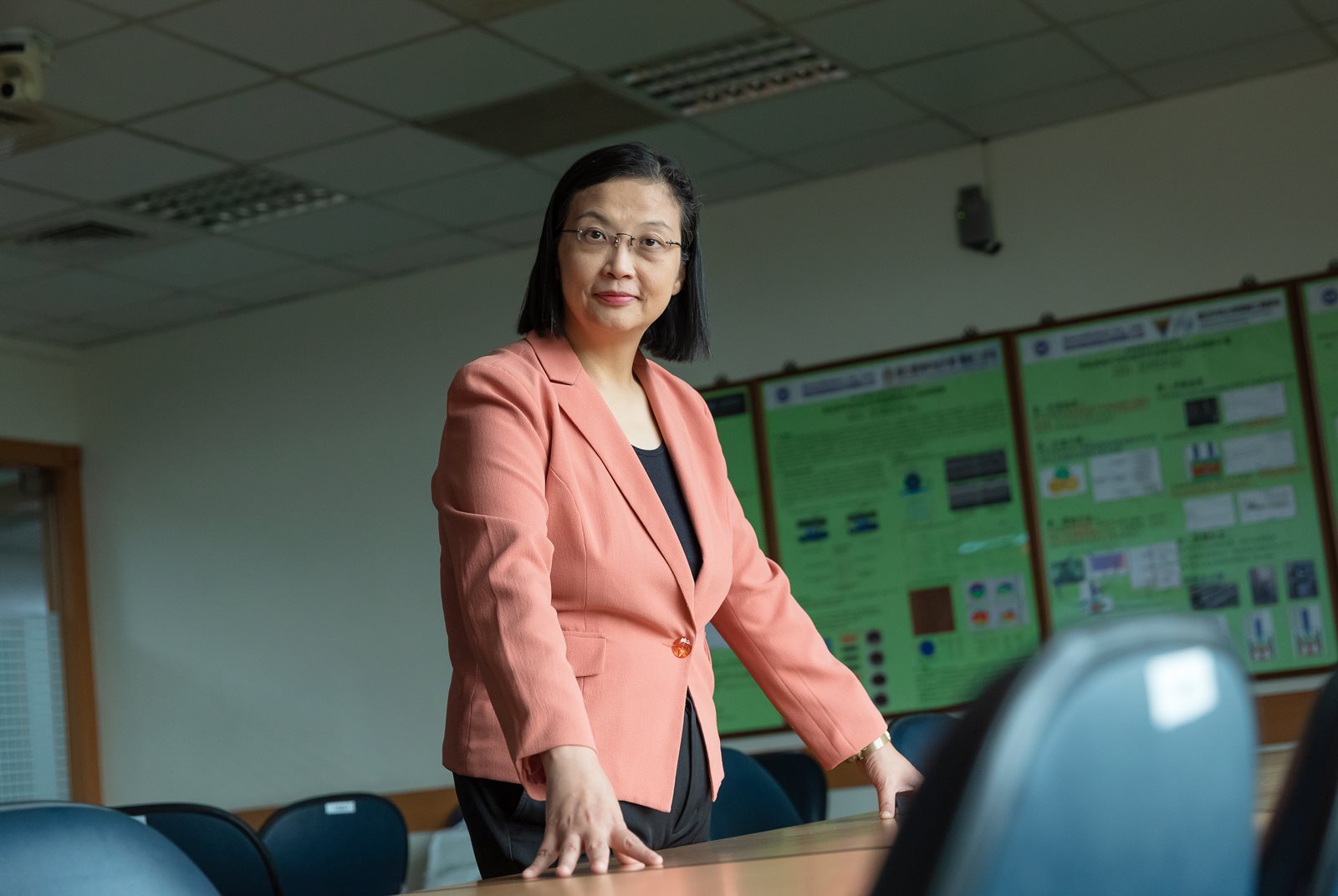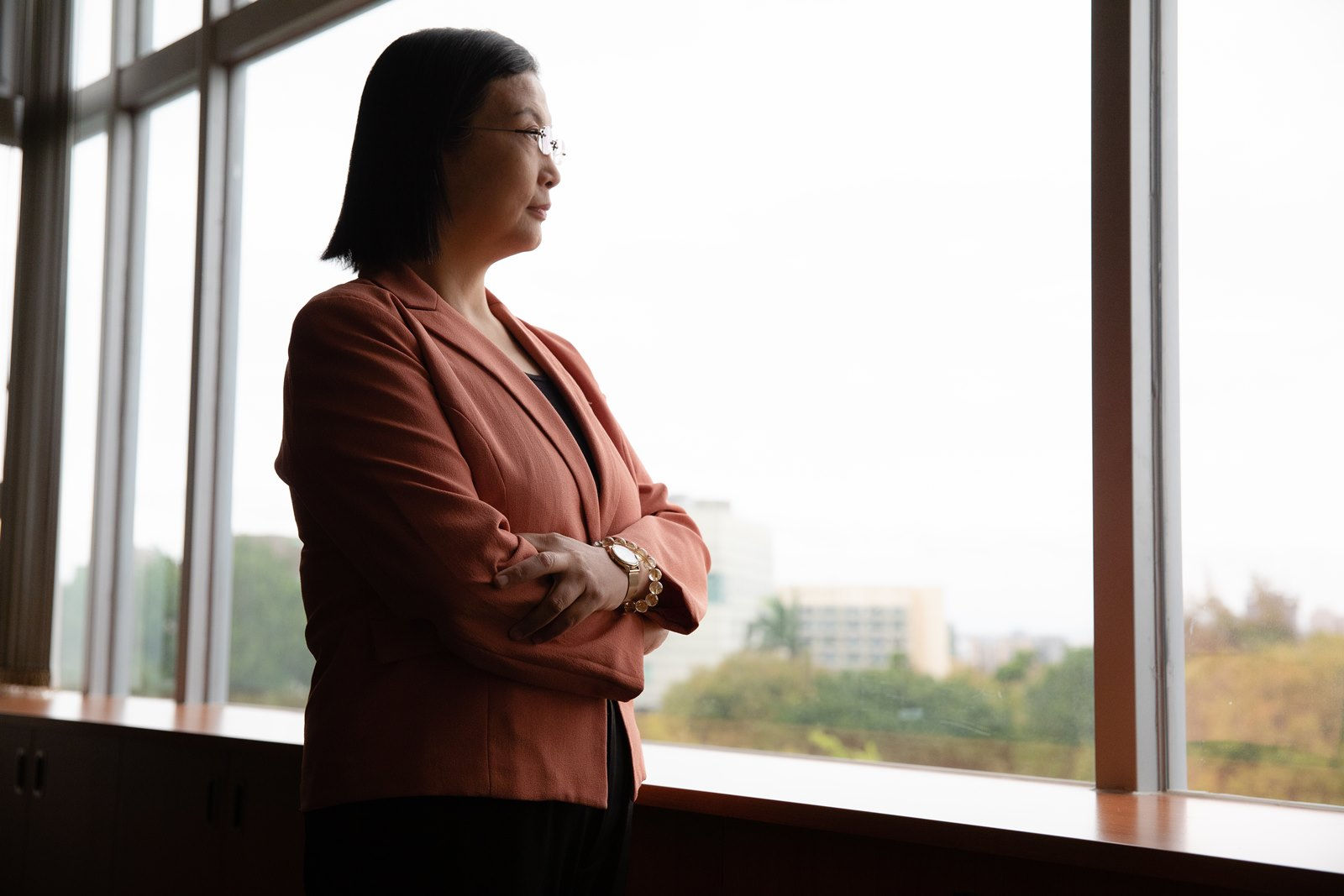How GlobalWafers got ready for merger failure

Source:Chien-Ying Chiu
When a bid by Taiwan-based GlobalWafers to acquire a German wafer maker fell through, foreign investors remained bullish on the company because it had a Plan B in place. Why did the deal not succeed and how did that contingency plan take shape?
Views
How GlobalWafers got ready for merger failure
By Hannah ChangFrom CommonWealth Magazine (vol. 743 )
It was Feb. 1, 2022, the first day of the Year of the Tiger. The clock was winding down, and when it hit 6:59 a.m. in Taiwan, GlobalWafers Co. Chairperson Doris Hsu (徐秀蘭) and the many other executives gathered were extremely tense but ready for whatever was about to happen.
Seconds later, at 7 a.m., or midnight in Germany, Hsu ordered her team into action, activating a Plan B the company had been plotting outside the public eye. Twenty executives hit the phones, calling the heads of the company’s factories in the United States, Japan, South Korea and Denmark to give them the go-ahead to proceed with plans to add or build new production capacity.
The call to action was accompanied by a major announcement from GlobalWafers Vice President William Chen (陳偉文): GlobalWafers’ acquisition of German wafer maker Siltronic AG did not receive regulatory approval in Germany by the Jan. 31 deadline when the offer expired. As a result, the GlobalWafers acquisition and all contracts related to the deal were no longer valid.
Chen began writing a press release saying that the funds originally allocated to the acquisition, estimated to be a 4.35 billion euro (US$4.9 billion) deal, would go to capital expenditure and funding for daily operations. Capital expenditure would total US$3.6 billion from 2022 to 2024, with US$2 billion of that for new plant construction and the other US$1.6 billion going to capacity expansion projects.
“I felt I was like a movie director, filming two different endings in advance,” Hsu said in an interview with CommonWealth, describing the lead-up to decision day.
The back story
GlobalWafers is the third largest wafer manufacturer in the world with a 15.2 percent market share, trailing only Shin-Etsu and Sumco Corporation of Japan. Its major customers include leading semiconductor foundries such as TSMC, Samsung, and United Microelectronics.
The company it hoped to acquire, Siltronic, ranked fourth in the world with an 11.5 percent market share.
This acquisition drama being “directed” by Hsu, billed as the biggest overseas takeover ever by a Taiwanese tech company, played out over a period of 14 months, but ended with a breakup, spoiling the happy ending. GlobalWafers anticipated that a successful merger would have doubled its production capacity and vaulted its wafer sales to second highest in the world with a chance to challenge for the top spot.
According to Hsu, the company’s clients in Taiwan, Japan, South Korea, the United States and Europe had all requested over the past 18 months that it increase its capacity, but GlobalWafers decided that new capacity would be built only if the acquisition fell through.
Just cutting a deal with Siltronic was never a sure thing. CommonWealth exclusively reported in December 2020 that GlobalWafers was competing with interest from China’s National Integrated Circuit Industry Investment Fund (CICF). To repel the Chinese bid, the Taiwanese company agreed to pay 3.75 billion euros, or 125 euros per share, for Siltronic, a 48 percent premium above the 90-day moving average for the stock as of Nov. 27, 2020. The two parties expected the merger to be completed in the second half of 2021.
Little could they know, however, that global trade issues would heat up and the COVID-19 pandemic would sweep across the world, disrupting supply chains and turning semiconductors into a strategic commodity for every major country.
Why the deal failed: Geopolitics
Finalizing the acquisition of Siltronic was a huge undertaking, requiring antitrust approval from Germany, China, the U.S., Taiwan, Japan and Singapore, and separate approval from investment regulators in Germany, the United Kingdom, and the U.S. But with geopolitical tensions on the rise, the attitudes of Chinese and German regulators were increasingly unclear, and other potential obstacles stood in the way.
For a start, GlobalWafers was forced to up its price for the German company.
When the merger was first announced in late November 2020, the price agreed upon was 125 euros per share, but Siltronic received repeated calls from German shareholders and its union to increase the bid because of the semiconductor market’s strong prospects.
GlobalWafers responded by increasing its offer price twice, and ended up at 145 euros per share in January 2021, a 71 percent premium over the stock price before the deal was announced. The higher offer helped GlobalWafers secure the shares of Siltronic’s major shareholder within the pre-set deadline and publicly acquire 70.3 percent of all outstanding shares, the threshold needed for the deal to go ahead.
Of bigger concern, however, were political factors out of the companies’ control.
Chen was frank in his assessment: The reviews by the U.S., China, and Germany took the longest, and when it came to Germany, “politics was the biggest issue.”
Mathieu Duchâtel, director of the Asia Program at French think tank Institut Montaigne, said the pandemic was a major underlying factor because it exposed the vulnerability of the semiconductor supply chain.
The European Union proposed the EU Chips Act to address the problem, and Germany, the U.S. and China all sharply increased their subsidies for chip production, hoping to reinvigorate domestic semiconductor sectors, he said.
At the beginning of 2021, German Economics Minister Peter Altmaier (who would step down from his post in December 2021) had asked Taiwan for help with automotive chips. In September, he visited Dresden where Germany’s biggest semiconductor cluster is located and stressed that the German government was planning to subsidize the cost of building plant capacity to strengthen his country’s semiconductor autonomy.
The push for autonomy was partly related to fears over Taiwan’s relative dominance of parts of the semiconductor sector.
Hsu agreed that the regulatory review of the deal ultimately came down to political rather than economic factors, describing the influence of “geopolitics” as huge.
A warning that something might be amiss was seen in Siltronic’s press release on its third-quarter results issued on Oct. 26, 2021.
“Siltronic expects that the merger with GlobalWafers will likely not be completed in the current financial year due to protracted discussions regarding regulatory clearances,” it said, referring to German authorities.
Planning for failure: Plan B
Hsu was preparing for the possibility of failure even before those warning signals emerged publicly. In mid-2021, she quietly built a Plan B team and launched a “dual-track plan.”
In an interview with CommonWealth, Hsu said Plan A envisioned a successful merger that once approved would focus immediately on efforts to integrate the Taiwan and German companies and address operations and management issues.
 (Source: Chien-Ying Chiu)
(Source: Chien-Ying Chiu)
Another team quietly worked on Plan B, to be carried out if the merger failed. In shaping the plan, team members had to take stock of factory expansions and their ability to handle global orders, the clients GlobalWafers needed to sign long-term contracts with, and what new factories needed to be built to support client demand. They also checked with different governments to see how much GlobalWafers could get in subsidies were it to build a new factory in their respective countries.
Plan B involved roughly 20 people, and it was detailed to the point of listing who would head overseas factories, getting blueprints for new plants from architects and engineering companies, and soliciting bids and drawings from contractors for those projects. As for existing production facilities, it communicated with overseas governments on land, plant sites, water and power availability, power lines, and wastewater treatment, and planned in detail schedules for plant expansions or new builds and achieving initial phase goals.
Japan to see the biggest expansion?
Expansion plans were laid out for nine countries, including Japan, South Korea, Taiwan, the United States, and Denmark, with the new capacity coming online as soon as the second half of the 2023. Japan will likely see the biggest expansion in the GlobalWafers portfolio, given that the two factories it has there both produce 12-inch wafers, the mainstream product in the market, and the land and equipment needed to expand are already in place.
GlobalWafers would not disclose how the US$2 billion for the construction of new plants will be allocated because the countries and sites where the factories would be located has yet to be determined. But what is known is that new production could come online in 2024, and clients have already signed long-term contracts covering 2024 and the five following years.
Japan is the home territory of Japanese wafer giants Shin-Etsu and Sumco Corporation, and by expanding capacity there, GlobalWafers would be indicating its willingness to take on the big two head on. Having TSMC, one of its biggest customers, move into that market may have informed the company’s thought process.
On Feb. 15, 2022, TSMC announced that it would spend an estimated US$8.6 billion on its new fab in Kumamoto and that it expected construction of the fab to begin in 2022 and production to start by the end of 2024.
Gains despite acquisition failure
Though the acquisition did not come to fruition, GlobalWafers still benefited from the experience. Chen said GlobalWafers and Siltronic had the chance to gain a deep understanding of each other during the process, learning about the other side’s product portfolio, technology, capacity, and future plans.
Jack J.T. Huang (黃日燦), the honorary president of the Taiwan Mergers & Acquisitions and Private Equity Council (MAPECT), agreed. Overseas acquisitions in the past depended only on the two parties agreeing to terms, he said, but in today’s world, they are determined by international economic and political factors, and it is not surprising when deals fall through. That said, GlobalWafers still benefited from the process by being able to get a close look at a rival, Huang believed.
Hsu echoed Huang’s description of the current environment, suggesting that the semiconductor sector has entered a new era in which companies that want to dispose of assets or complete a merger will be more heavily affected by geopolitical factors. If CEOs want a planned merger to succeed, she said, they will have to thoroughly size up the prevailing political and economic mood, convince governments that agreeing to a merger or a sale or purchase of assets will not compromise national security, and be sure that the advantages outweigh the disadvantages.
With semiconductors emerging as a strategic commodity, overseas mergers and acquisitions are only bound to get more difficult. But failure in the field is not uncommon, Huang said, and the only answer is to “change direction. There is always a need for Plan B.”
Have you read?
♦ How a Wafer Maker Pulled Off Taiwan’s Biggest Overseas Tech Acquisition
♦ Meet the men on a mission to save Tatung
♦ What is TSMC doing building a fab in the American desert?
Translated by Luke Sabatier
Uploaded by Penny Chiang






